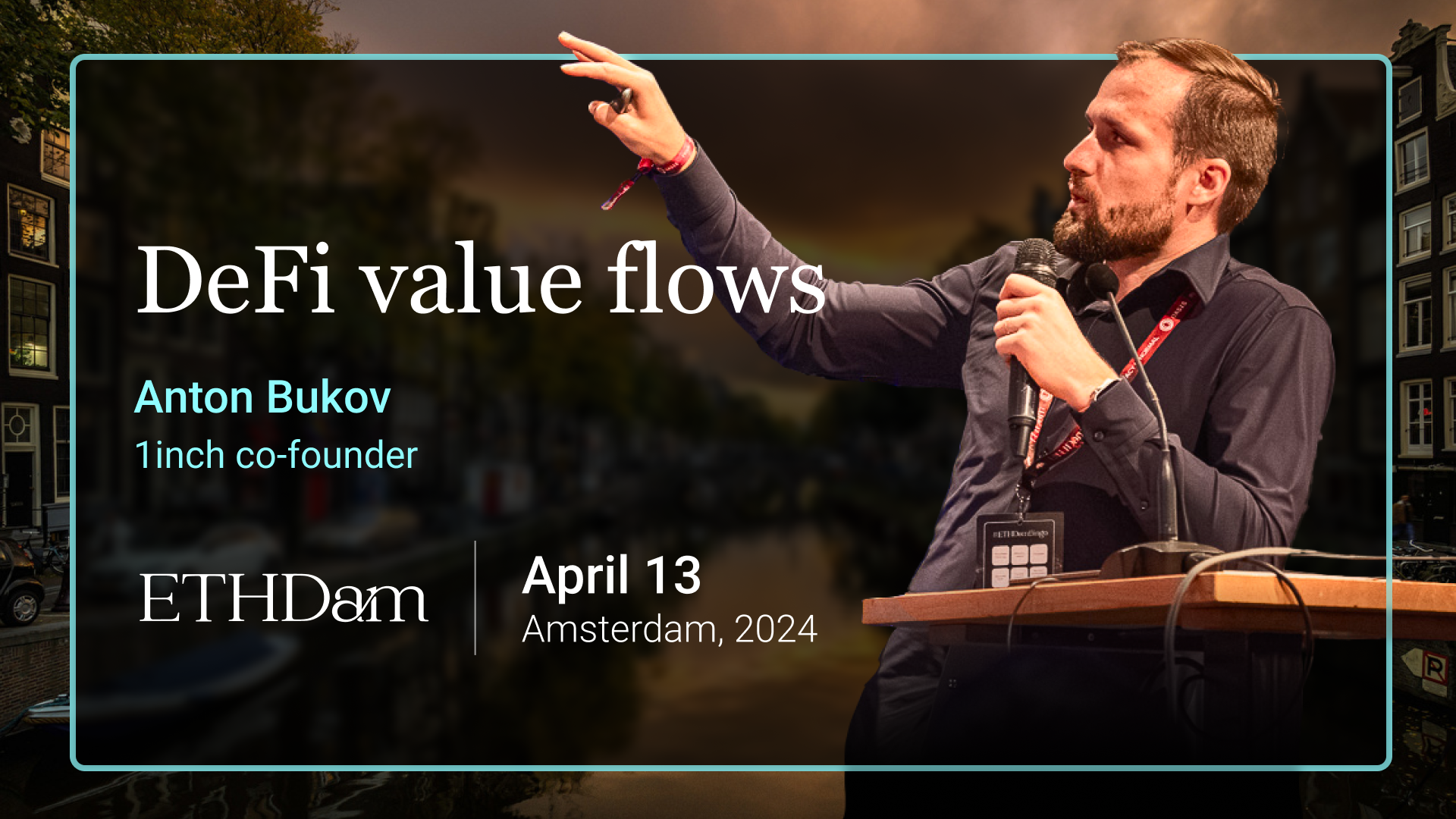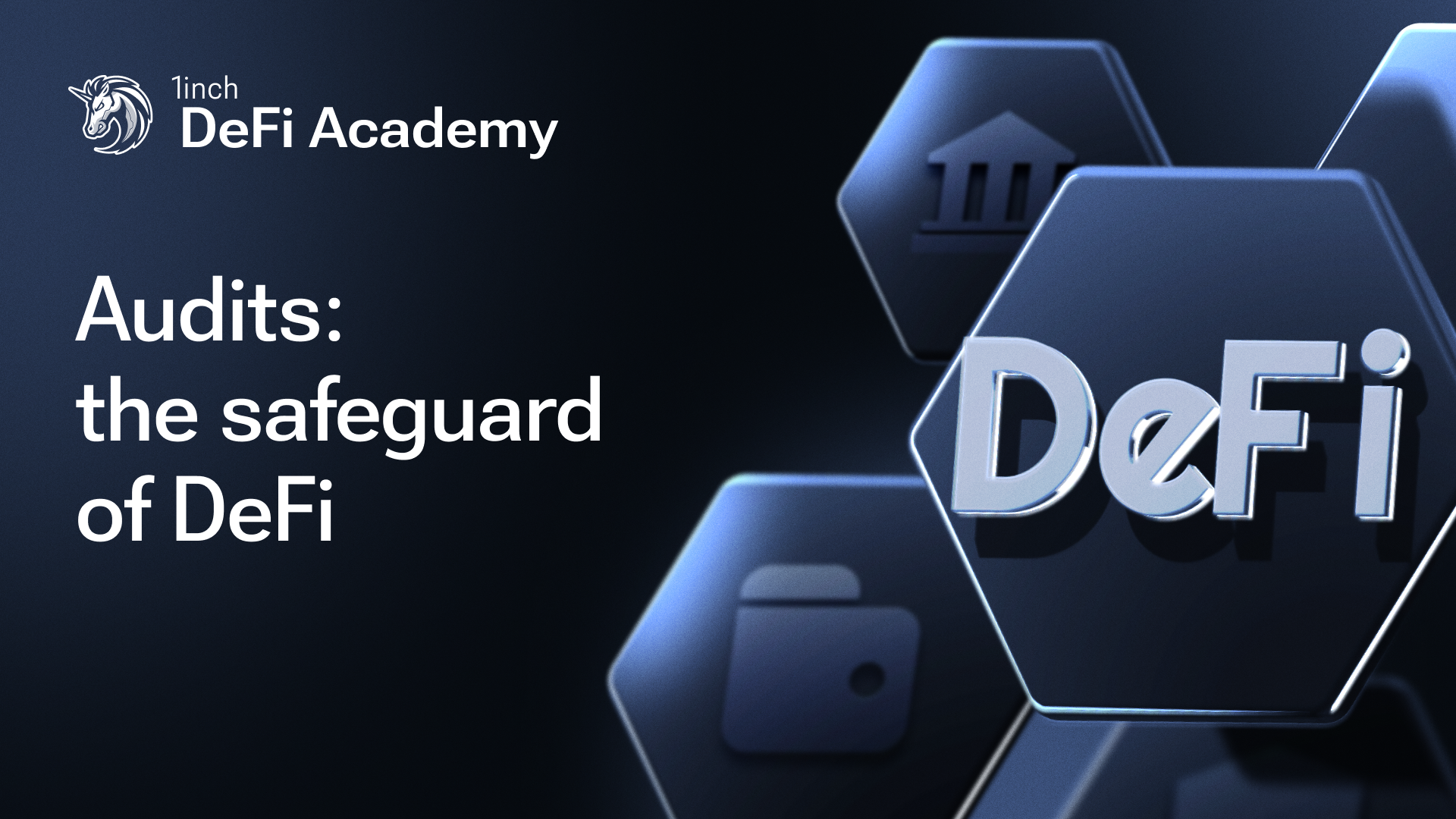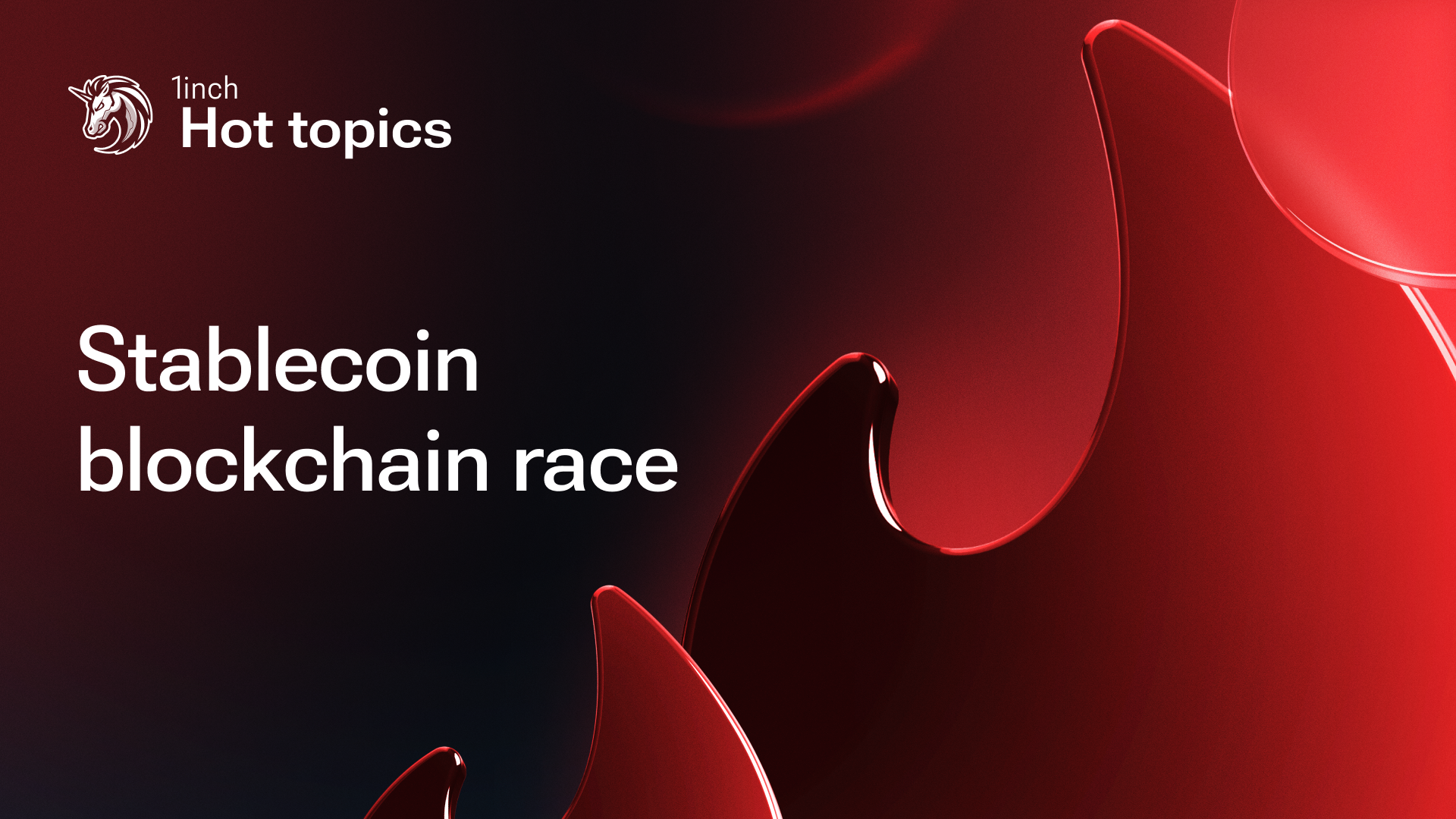Anton Bukov's insights into DeFi value flows

In his keynote address at ETHDam2024, 1inch co-founder Anton Bukov discussed the algorithm complexity and scalability of DeFi protocols. This post outlines the main highlights of his talk.
At ETHDam2024, hosted in Amsterdam on April 12-14, Anton Bukov delivered a keynote address titled "DeFi value flows."
During his presentation, Anton emphasized that DeFi computations are limited in comparison to TradFi, noting, "Only algorithms with constant or algorithmic complexity can effectively function in DeFi when involving multiple participants."
He introduced a classification for these algorithms based on asset type, speed - either instant, based on some event like a transaction, or gradual - and direction, either dispensing or collecting.
Anton provided examples to illustrate his points: "In automated market makers (AMMs), a fee from one user is distributed among multiple liquidity providers," he said.
"It doesn't matter how many liquidity providers there are - whether 1,000 or a million - the swap fee is distributed proportionally to their liquidity with all-one complexity."
He then discussed the application of these algorithms to money markets.
"Borrowers are paying interest gradually, which is redistributed among lenders - liquidity providers. It's essentially two different algorithms: one collecting assets from multiple participants and another distributing value among them." He mentioned DeFi platforms such as Compound, Synthetix, MakerDAO, DAI Savings Rate and Aave, which "dispense values, even if it's debt, to borrowers and liquidity providers."
"If we discuss the same asset instant collection, it's basically a rug pull or applies to options and probably insurance protocols," Anton observed.
"Whenever an oracle decides that all the insurance sellers or options sellers should be charged, they will be charged with one transaction. This happens instantly, collecting proportionally from every participant in the same asset."
Further elaborating on gradual collection mechanisms, Anton highlighted their efficiency.
"Same asset gradual collection is about money streams or subscriptions. People can have subscriptions which are actually linear streams among wallets, where each account has some speed of incoming and outgoing streams," he said. "This allows you to compute your next balance without enumerating all your streams, like running Netflix on blockchain without waiting for thousands of TPS."
Anton also pointed out the broader implications for blockchain adoption.
"All these protocols have algorithms that allow them to involve a potentially infinite amount of participants with constant gas costs. This means that those protocols are already ready for blockchain adoption and that's why they are getting a lot of traction."
At the same time, he highlighted vulnerabilities with instant distributions due to event triggering, which make them vulnerable to front-running attacks.
"Just-in-time (JIT) liquidity bots provide liquidity right before large swaps and withdraw it back immediately after. This can be mitigated by implementing delayed deposits or withdrawals."
"But this is not an issue for gradual distributions where your debt and collateral are growing every second," Anton explained. "There's no room for front-running or sandwich attacks here because it's gradual."
Wrapping up his talk, Anton reflected on the potential and readiness of DeFi technologies.
"The requirement for high optimization, to have no computational complexity - to have constant complexity - is high, and we will likely see more innovative protocols involving these kinds of algorithms."
"DeFi is not coming, it's already here. Most of the protocols we discuss are ready for large-scale operations, capable of supporting transactions between millions of users," he concluded.
Stay tuned to learn more about 1inch news and events!




























